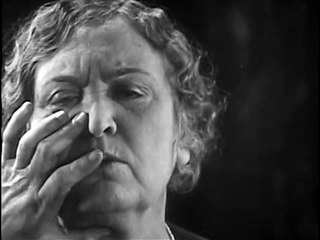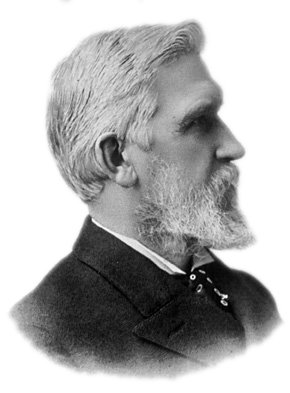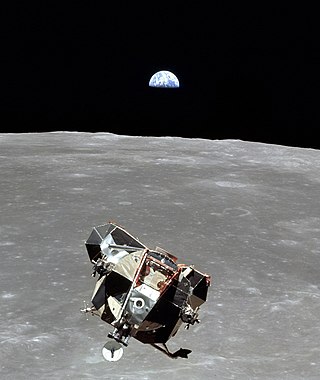
Sign languages are languages that use the visual-manual modality to convey meaning, instead of spoken words. Sign languages are expressed through manual articulation in combination with non-manual markers. Sign languages are full-fledged natural languages with their own grammar and lexicon. Sign languages are not universal and are usually not mutually intelligible, although there are also similarities among different sign languages.

Tadoma is a method of communication utilized by deafblind individuals, in which the listener places their little finger on the speaker's lips and their fingers along the jawline. The middle three fingers often fall along the speaker's cheeks with the little finger picking up the vibrations of the speaker's throat. It is sometimes referred to as tactile lipreading, as the listener feels the movement of the lips, the vibrations of the vocal cords, expansion of the cheeks and the warm air produced by nasal phonemes such as 'N' and 'M'. Hand positioning can vary, and it is a sometimes also used by hard-of-hearing people to supplement their remaining hearing.

An invention is a unique or novel device, method, composition, idea or process. An invention may be an improvement upon a machine, product, or process for increasing efficiency or lowering cost. It may also be an entirely new concept. If an idea is unique enough either as a stand-alone invention or as a significant improvement over the work of others, it can be patented. A patent, if granted, gives the inventor a proprietary interest in the patent over a specific period of time, which can be licensed for financial gain.
A spoken language is a language produced by articulate sounds or manual gestures, as opposed to a written language. An oral language or vocal language is a language produced with the vocal tract in contrast with a sign language, which is produced with the body and hands.
A sign language glove is an electronic device which attempts to convert the motions of a sign language into written or spoken words. Some critics of such technologies have argued that the potential of sensor-enabled gloves to do this is commonly overstated or misunderstood, because many sign languages have a complex grammar that includes use of the sign space and facial expressions.

Margaret Eloise Knight was an American inventor, notably of a machine to produce flat-bottomed paper bags. She has been called "the most famous 19th-century woman inventor". She founded the Eastern Paper Bag Company in 1870, creating paper bags for groceries similar in form to the ones that would be used in later generations. Knight received dozens of patents in different fields, and became a symbol for women's empowerment.

Elisha Gray was an American electrical engineer who co-founded the Western Electric Manufacturing Company. Gray is best known for his development of a telephone prototype in 1876 in Highland Park, Illinois. Some recent authors have argued that Gray should be considered the true inventor of the telephone because Alexander Graham Bell allegedly stole the idea of the liquid transmitter from him. Although Gray had been using liquid transmitters in his telephone experiments for more than two years previously, Bell's telephone patent was upheld in numerous court decisions.
An inventor's notebook is used by inventors, scientists and engineers to record their ideas, invention process, experimental tests and results and observations. It is not a legal document but is valuable, if properly organized and maintained, since it can help establish dates of conception and reduction to practice. It may be considered as grey literature. The information can improve the outcome of a patent or a patent contestation.
First to file and first to invent are legal concepts that define who has the right to the grant of a patent for an invention. Since 16 March 2013, after the USA abandoned its "first to invent/document" system, all countries operate under "first-to-file" patent priority requirement.
Sufficiency of disclosure or enablement is a patent law requirement that a patent application disclose a claimed invention in sufficient detail so that the person skilled in the art could carry out that claimed invention. The requirement is fundamental to patent law: a monopoly is granted for a given period of time in exchange for a disclosure to the public how to make or practice the invention.
Manually coded languages (MCLs) are a family of gestural communication methods which include gestural spelling as well as constructed languages which directly interpolate the grammar and syntax of oral languages in a gestural-visual form—that is, signed versions of oral languages. Unlike the sign languages that have evolved naturally in deaf communities, these manual codes are the conscious invention of deaf and hearing educators, and as such lack the distinct spatial structures present in native deaf sign languages. MCLs mostly follow the grammar of the oral language—or, more precisely, of the written form of the oral language that they interpolate. They have been mainly used in deaf education in an effort to "represent English on the hands" and by sign language interpreters in K-12 schools, although they have had some influence on deaf sign languages where their implementation was widespread.

Ilan Stavans is an American writer and academic. He writes and speaks on American, Hispanic, and Jewish cultures. He is the author of Quixote (2015) and a contributor to the Norton Anthology of Latino Literature (2010). He was the host of the syndicated PBS show Conversations with Ilan Stavans, which ran from 2001 to 2006.
Italian Sign Language or LIS is the visual language used by deaf people in Italy. Deep analysis of it began in the 1980s, along the lines of William Stokoe's research on American Sign Language in the 1960s. Until the beginning of the 21st century, most studies of Italian Sign Language dealt with its phonology and vocabulary. According to the European Union for the Deaf, the majority of the 60,000–90,000 Deaf people in Italy use LIS.

This history of the telephone chronicles the development of the electrical telephone, and includes a brief overview of its predecessors. The first telephone patent was granted to Alexander Graham Bell in 1876.

The history of science and technology in Mexico spans many years.

A timeline of United States inventions (1890–1945) encompasses the ingenuity and innovative advancements of the United States within a historical context, dating from the Progressive Era to the end of World War II, which have been achieved by inventors who are either native-born or naturalized citizens of the United States. Copyright protection secures a person's right to his or her first-to-invent claim of the original invention in question, highlighted in Article I, Section 8, Clause 8 of the United States Constitution which gives the following enumerated power to the United States Congress:
To promote the Progress of Science and useful Arts, by securing for limited Times to Authors and Inventors the exclusive Right to their respective Writings and Discoveries.

A timeline of United States inventions (1946–1991) encompasses the ingenuity and innovative advancements of the United States within a historical context, dating from the era of the Cold War, which have been achieved by inventors who are either native-born or naturalized citizens of the United States. Copyright protection secures a person's right to his or her first-to-invent claim of the original invention in question, highlighted in Article I, Section 8, Clause 8 of the United States Constitution which gives the following enumerated power to the United States Congress:
To promote the Progress of Science and useful Arts, by securing for limited Times to Authors and Inventors the exclusive Right to their respective Writings and Discoveries.
Stanford University v. Roche Molecular Systems, Inc., 563 U.S. 776 (2011), was a United States Supreme Court case in which the Court held that title in a patented invention vests first in the inventor, even if the inventor is a researcher at a federally funded lab subject to the 1980 Bayh–Dole Act. The judges affirmed the common understanding of U.S. constitutional law that inventors originally own inventions they make, and contractual obligations to assign those rights to third parties are secondary.
The machine translation of sign languages has been possible, albeit in a limited fashion, since 1977. When a research project successfully matched English letters from a keyboard to ASL manual alphabet letters which were simulated on a robotic hand. These technologies translate signed languages into written or spoken language, and written or spoken language to sign language, without the use of a human interpreter. Sign languages possess different phonological features than spoken languages, which has created obstacles for developers. Developers use computer vision and machine learning to recognize specific phonological parameters and epentheses unique to sign languages, and speech recognition and natural language processing allow interactive communication between hearing and deaf people.









